Abstract
Salicylic acid inhibited ethylene formation from ACC in self-buffered (pH 3.8) pear (Pyrus communis) cell suspension cultures with a K1app of about 10 micromolar after 1 to 3 hours incubation. Inhibition appeared noncompetitive. Among 22 related phenolic compounds tested, only acetylsalicylic acid showed similar levels of inhibition. Inhibition by salicylic acid was inversely dependent on the pH of the culture medium and did not require a continuous external supply of salicylate. When compared to known inhibitors of the ethylene forming enzyme, cobalt, n-propyl gallate, and dinitrophenol, inhibition by salicylic acid most closely resembled that by dinitrophenol but salicylic acid did not produce the same degree of respiratory stimulation. Results are discussed in terms of other known effects of salicylic acid on plants, pH-dependency, and the possible influence of salicylic acid on electron transport.
Full text
PDF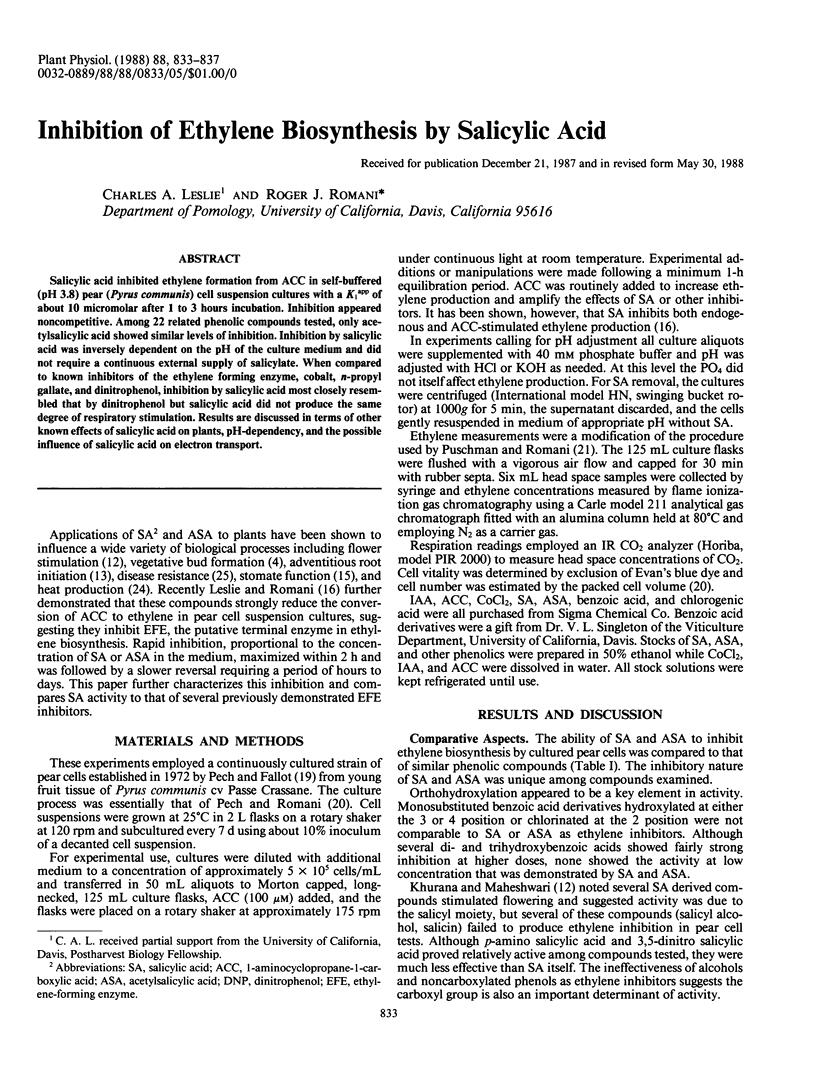
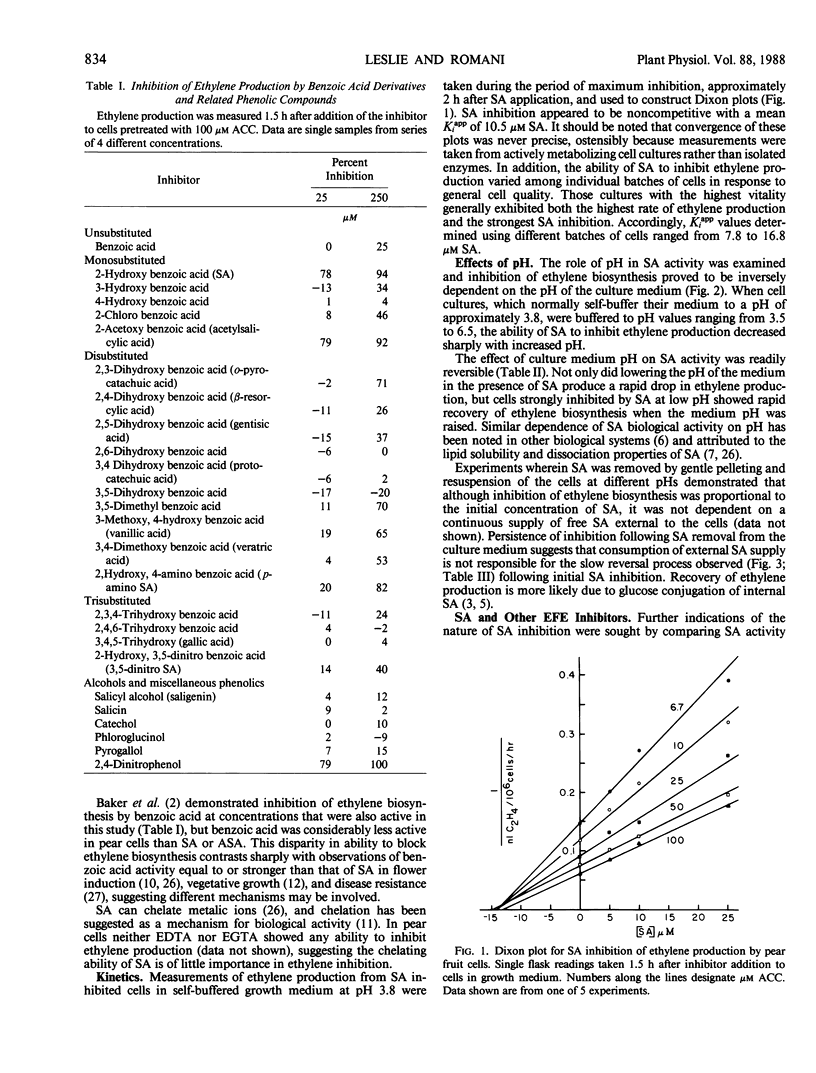
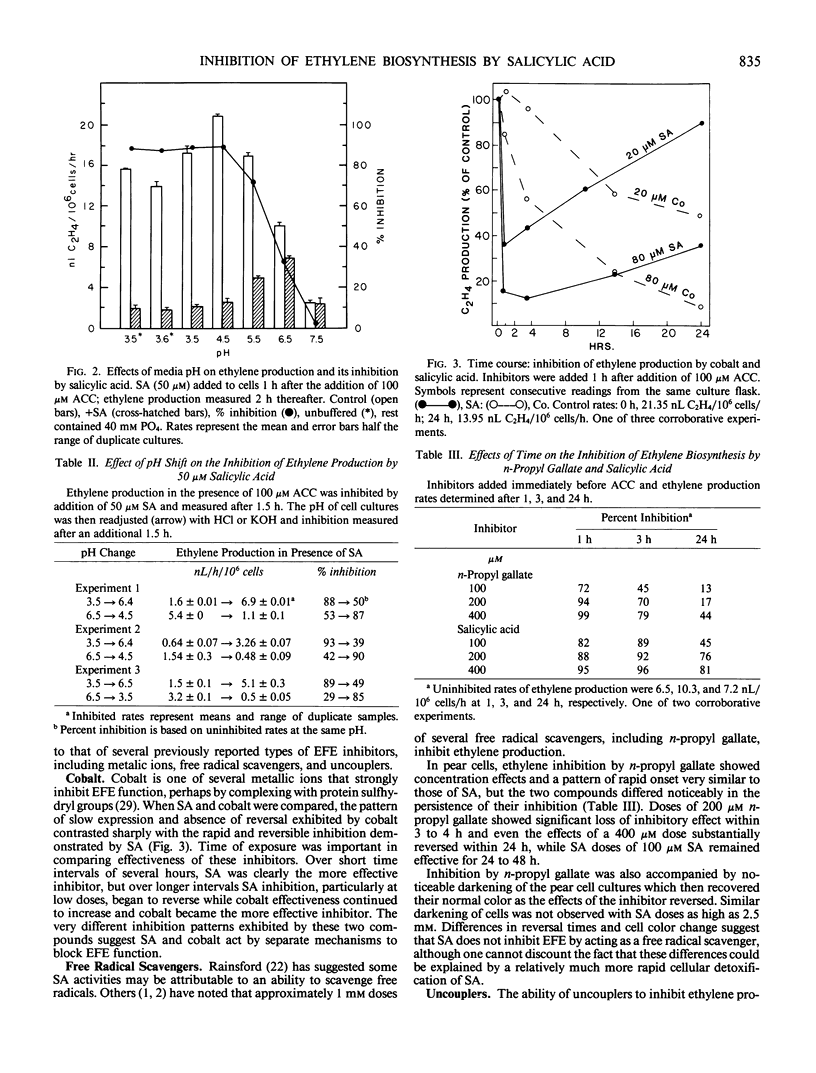
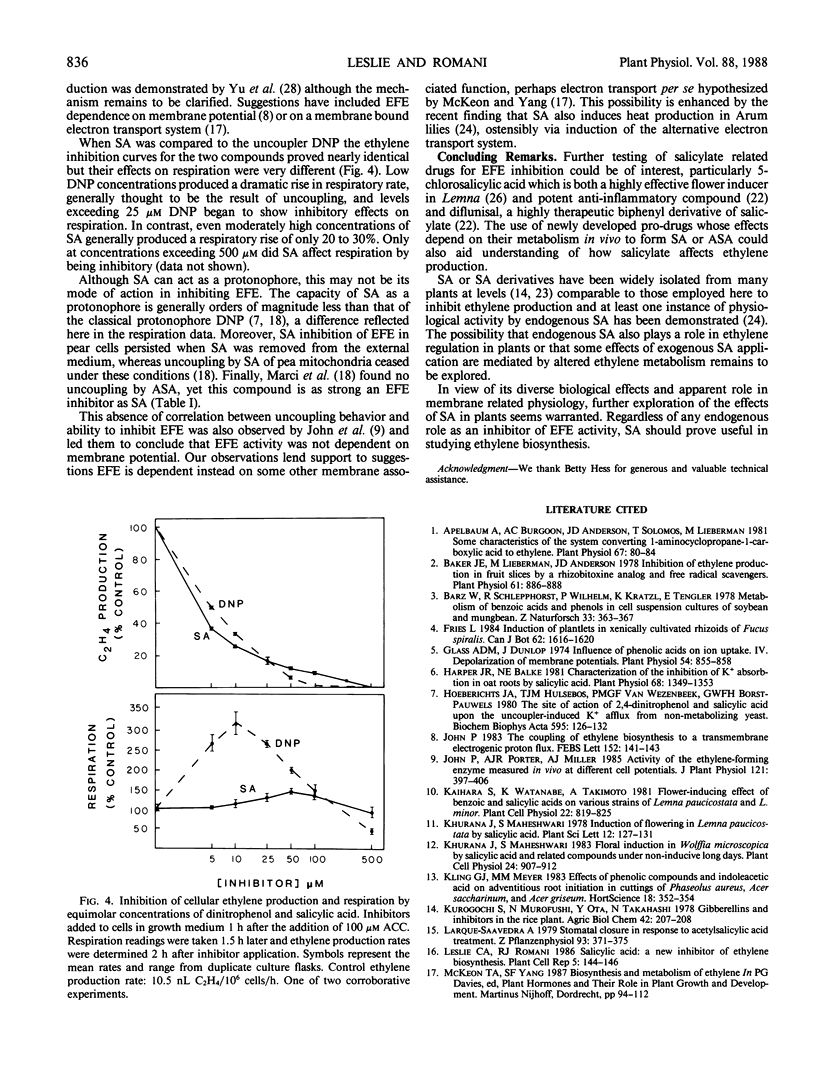
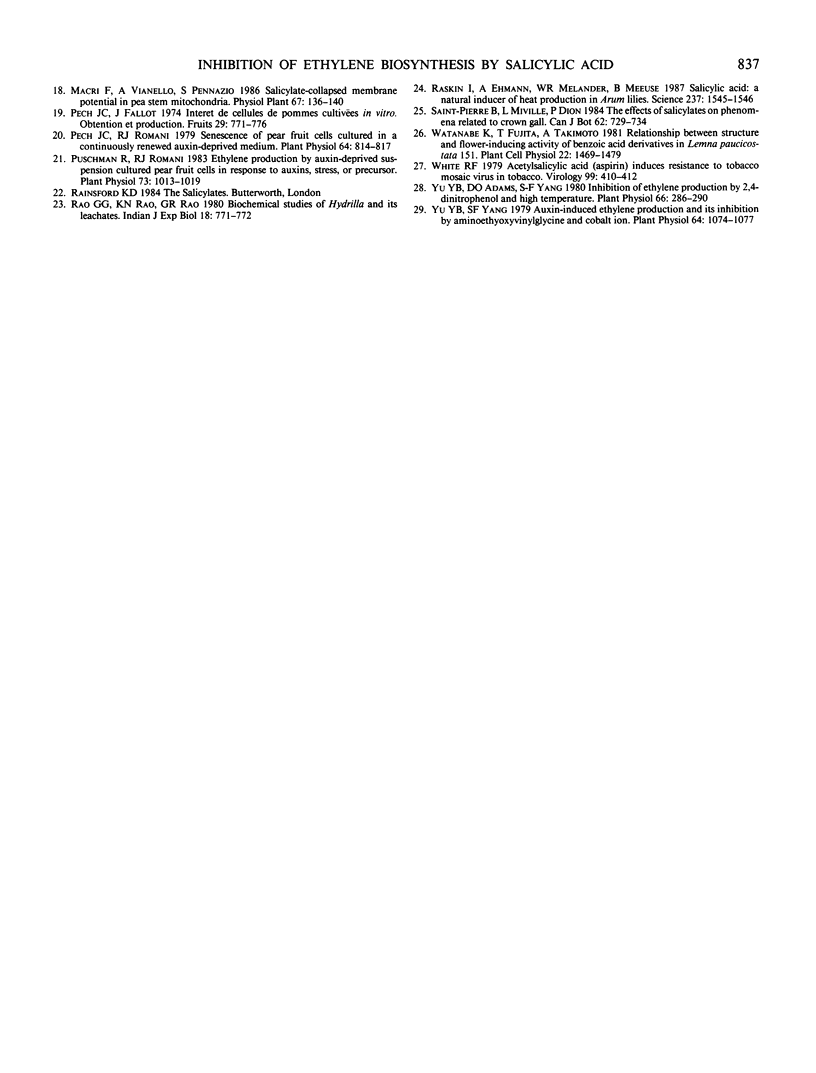
Selected References
These references are in PubMed. This may not be the complete list of references from this article.
- Apelbaum A., Burgoon A. C., Anderson J. D., Solomos T., Lieberman M. Some Characteristics of the System Converting 1-Aminocyclopropane-1-carboxylic Acid to Ethylene. Plant Physiol. 1981 Jan;67(1):80–84. doi: 10.1104/pp.67.1.80. [DOI] [PMC free article] [PubMed] [Google Scholar]
- Baker J. E., Lieberman M., Anderson J. D. Inhibition of ethylene production in fruit slices by a rhizobitoxine analog and free radical scavengers. Plant Physiol. 1978 Jun;61(6):886–888. doi: 10.1104/pp.61.6.886. [DOI] [PMC free article] [PubMed] [Google Scholar]
- Glass A. D. Influence of Phenolic Acids on Ion Uptake: IV. Depolarization of Membrane Potentials. Plant Physiol. 1974 Dec;54(6):855–858. doi: 10.1104/pp.54.6.855. [DOI] [PMC free article] [PubMed] [Google Scholar]
- Harper J. R., Balke N. E. Characterization of the inhibition of k absorption in oat roots by salicylic Acid. Plant Physiol. 1981 Dec;68(6):1349–1353. doi: 10.1104/pp.68.6.1349. [DOI] [PMC free article] [PubMed] [Google Scholar]
- Hoeberichts J. A., Hulsebos T. J., Van Wezenbeek P. M., Borst-Pauwels G. W. The site of action of 2,4-dinitrophenol and salicylic acid upon the uncoupler-induced K+ efflux from non-metabolizing yeast. Biochim Biophys Acta. 1980;595(1):126–132. doi: 10.1016/0005-2736(80)90254-0. [DOI] [PubMed] [Google Scholar]
- Pech J. C., Romani R. J. Senescence of Pear Fruit Cells Cultured in a Continuously Renewed, Auxin-deprived Medium. Plant Physiol. 1979 Nov;64(5):814–817. doi: 10.1104/pp.64.5.814. [DOI] [PMC free article] [PubMed] [Google Scholar]
- Puschmann R., Romani R. Ethylene production by auxin-deprived, suspension-cultured pear fruit cells in response to auxins, stress, or precursor. Plant Physiol. 1983 Dec;73(4):1013–1019. doi: 10.1104/pp.73.4.1013. [DOI] [PMC free article] [PubMed] [Google Scholar]
- Yu Y. B., Adams D. O., Yang S. F. Inhibition of ethylene production by 2,4-dinitrophenol and high temperature. Plant Physiol. 1980 Aug;66(2):286–290. doi: 10.1104/pp.66.2.286. [DOI] [PMC free article] [PubMed] [Google Scholar]
- Yu Y. B., Yang S. F. Auxin-induced Ethylene Production and Its Inhibition by Aminoethyoxyvinylglycine and Cobalt Ion. Plant Physiol. 1979 Dec;64(6):1074–1077. doi: 10.1104/pp.64.6.1074. [DOI] [PMC free article] [PubMed] [Google Scholar]


